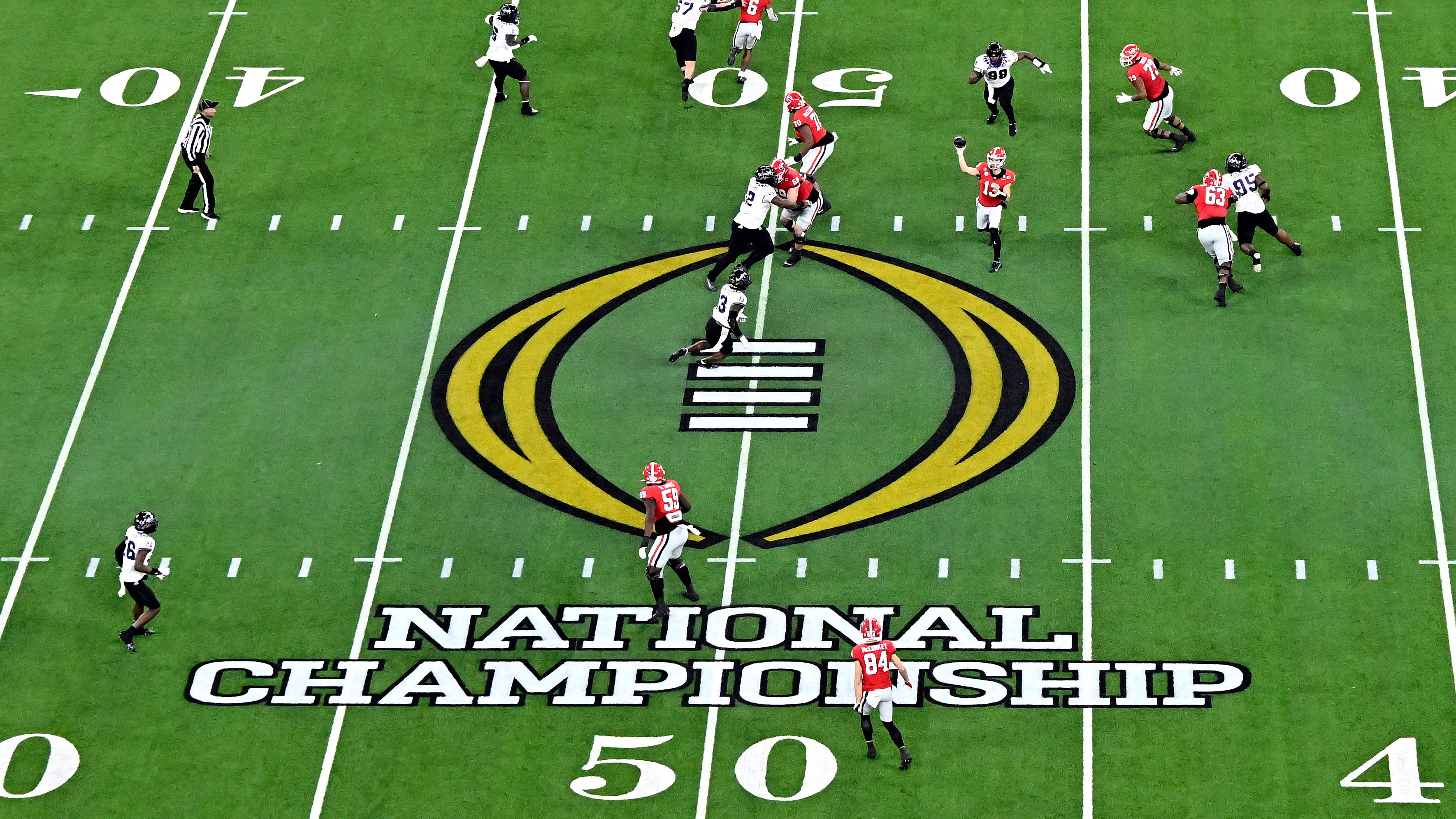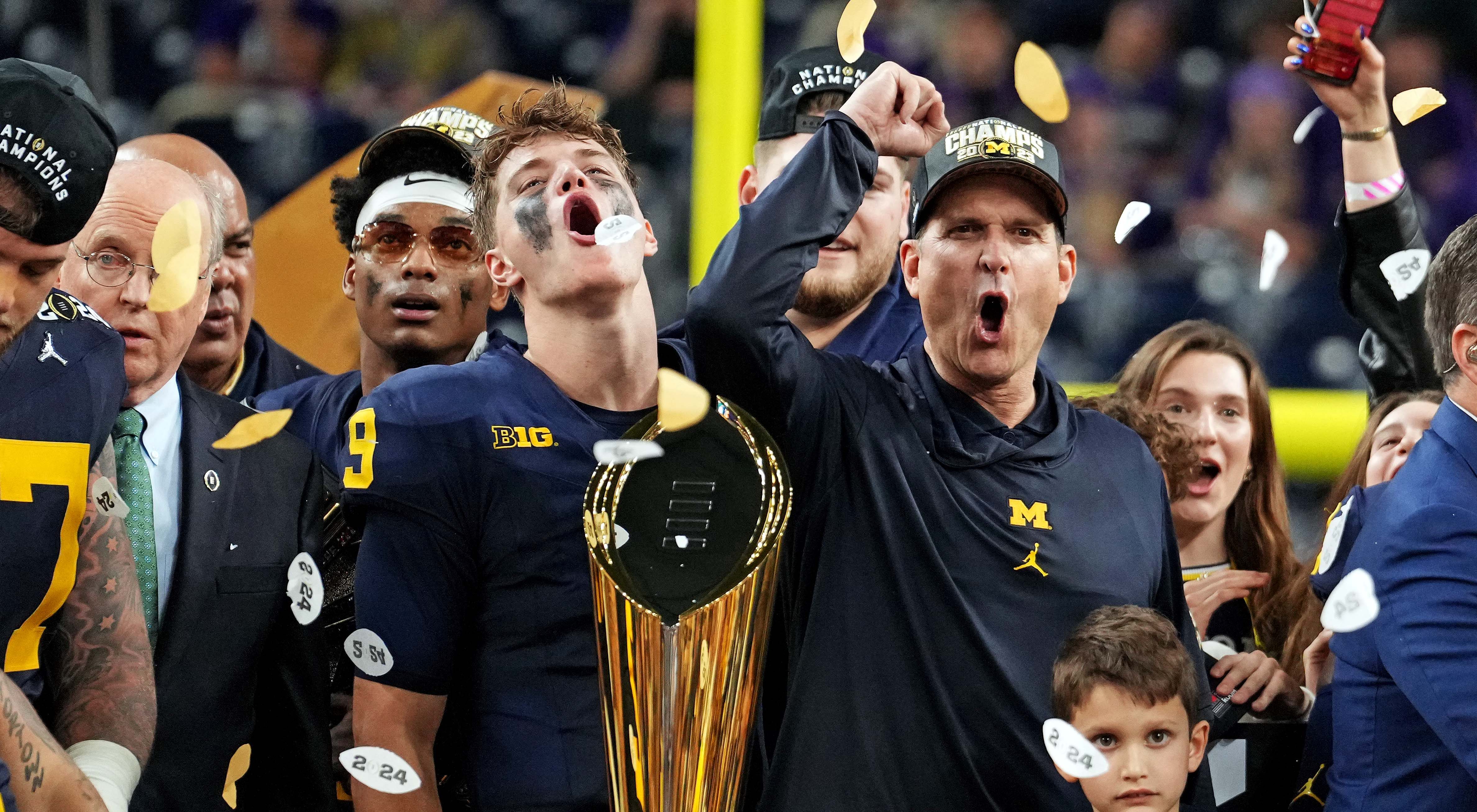
Now that the yearlong process to finalize how the 12 teams for the expanded College Football Playoff will be selected for the next two seasons is complete, there are already discussions about maybe adding more teams for 2026 and beyond.
The CFP management committee discussed the potential of a 14-team bracket on Wednesday, along with governance of the playoff and the distribution of growing revenue after the next two seasons. But the 10 FBS conference commissioners and Notre Dame's incoming athletic director did not reach any conclusions after meeting for nearly nine hours in a hotel at the Dallas-Fort Worth International Airport.
Watch NBC6 free wherever you are
“Really productive, very collegial, very collaborative,” ACC Commissioner Jim Phillips said. “Not everybody loves everything all the time. It’s just one of those things when you have 11 different entities. But I think really a positive meeting.”
That commissioners met a day after university presidents and chancellors who oversee the playoffs approved the format for the five highest-ranked conference champions and seven at-large teams for the playoff field that triples in size for the upcoming season. CFP managers first started working on an expansion plan in 2019, though the pandemic likely slowed down some of the progress.
Get local news you need to know to start your day with NBC 6's News Headlines newsletter.
The timing is more pressing now on pending and potentially contentious issues, like money, since there is no contract in place for the CFP past the 2025 season.
“Today was good in that it created that sense of ‘let’s keep working even faster,’ ” Big Ten Commissioner Tony Petitti said.
The CFP and ESPN have agreed in principle to a six-year contract extension that runs through the 2031 football season that's worth about $1.3 billion annually. But that deal isn't done because issues related to revenue distribution and governance have to be worked out.
ESPN already has exclusive rights for the semifinals and championship games the next two seasons, but broadcasts for the additional early-round games this year and next still have to be settled since the 12-team format took effect before the end of the current deal.
Executive Director Bill Hancock said the CFP would like to be done with the format and new TV deal within about a month.
“We need to be done with this,” Hancock said. “Today left everyone with an encouraging feeling.”
Hancock said he wouldn't get into details about any of the discussions concerning revenue, format or governance of the CFP moving forward since everything is subject to discussion and change, but said there were “very positive vibes on everything that we had in front of us.”
Like over the past decade with a four-team setup, no conference has automatic access into the new 12-team playoff. But now that field could potentially include automatic qualifiers for some leagues.
As for CFP revenue, under the four-team playoff system, the Power Five conferences received about 78% of that money to distribute to their members, and the Group of Five got almost all of the rest. Now with only four power conferences, and the further separation of the SEC and Big Ten from the rest, how the money is split up is certain to change.
The SEC will grow to 16 teams next fall with the addition of Big 12 powerhouses Texas and Oklahoma. Four of the 10 departing Pac-12 members are joining what will become an 18-team Big Ten.
Those two leagues earlier this month announced the formation of a joint advisory group of university leaders and athletic directors to try to find solutions to the issues facing college sports.
SEC Commissioner Greg Sankey departed to catch a flight without talking to reporters.
One of the primary reasons that expansion to 12 teams took so long was that unanimity is required among all 10 conferences, plus Notre Dame, to make any changes under the current CFP structure. That too could be altered moving forward, giving certain entities more sway in decisions.
Pac-12 teams are also headed to the Big 12 and ACC, leaving only Oregon State and Washington State in the Pac-12, though they will continue to operate the league while playing most of their games against Mountain West opponents.
Pac-12 Commissioner George Kliavkoff, who is parting ways with the league at the end of this month, attended the meeting but didn't speak with reporters afterward. Deputy Commissioner Teresa Gould, who will succeed him on March 1, also was there.



